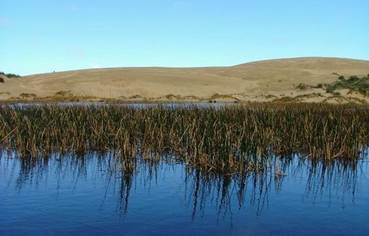Introduction
The Northland region has a large number of small and generally shallow lakes. These were formed by dune or volcanic activity, or are artificially made. These lakes are a valuable ecological, cultural, social and economic resource for the region. Lake Taharoa of the Kai Iwi group is one of the largest and deepest dune lakes in New Zealand, covering an area of 237 hectares and being 37 metres deep.
The Northland Lake Water Quality Monitoring Network (LWQMN) was established by Northland Regional Council (NRC) in 2005, for the purpose of gathering data on water quality in the region's lakes and monitoring change over time. The programme includes 31 lakes spread throughout Northland. These lakes are sampled every three months to test for a range of parameters, such as temperature, nutrients and bacteria.
Lakes are graded using the Trophic Level Index (TLI) (a measure of the amount of nutrients in the water). Lakes are graded from ultra-microtrophic (very low nutrient levels) to hypertrophic (very high nutrient levels). Of the 31 lakes monitored during 2007-08, four were graded as oligotrophic (low nutrients), 12 mesotrophic (intermediate nutrients), 11 eutrophic (high nutrients), two supertrophic (high nutrients) and two hypertrophic. Aquatic plants need many types of nutrients for growth however increased levels of nutrients can cause excessive plant growth, which can lead to blooms of toxic algae and nuisance weeds.
In addition, ecological monitoring is undertaken of 82 lakes in the region annually by the National Institute of Water and Atmospheric Research (NIWA). Lakes in this programme are ranked according to their ecological value, i.e., how many native or endangered species they contain, absence of pest species and how close the lake is to its natural state. Of the 82 lakes monitored during 2007-08, 42 were ranked as having moderate to low value, 23 moderate to high value and 17 were ranked as outstanding.
As recommended by NIWA, ongoing pest plant surveillance was carried out on eight lakes in the region during 2007-08. More information on this monitoring can be found in the section on ‘Ecological Monitoring'.

Photo: Lake Te Paki in the Aupouri Lakes group
